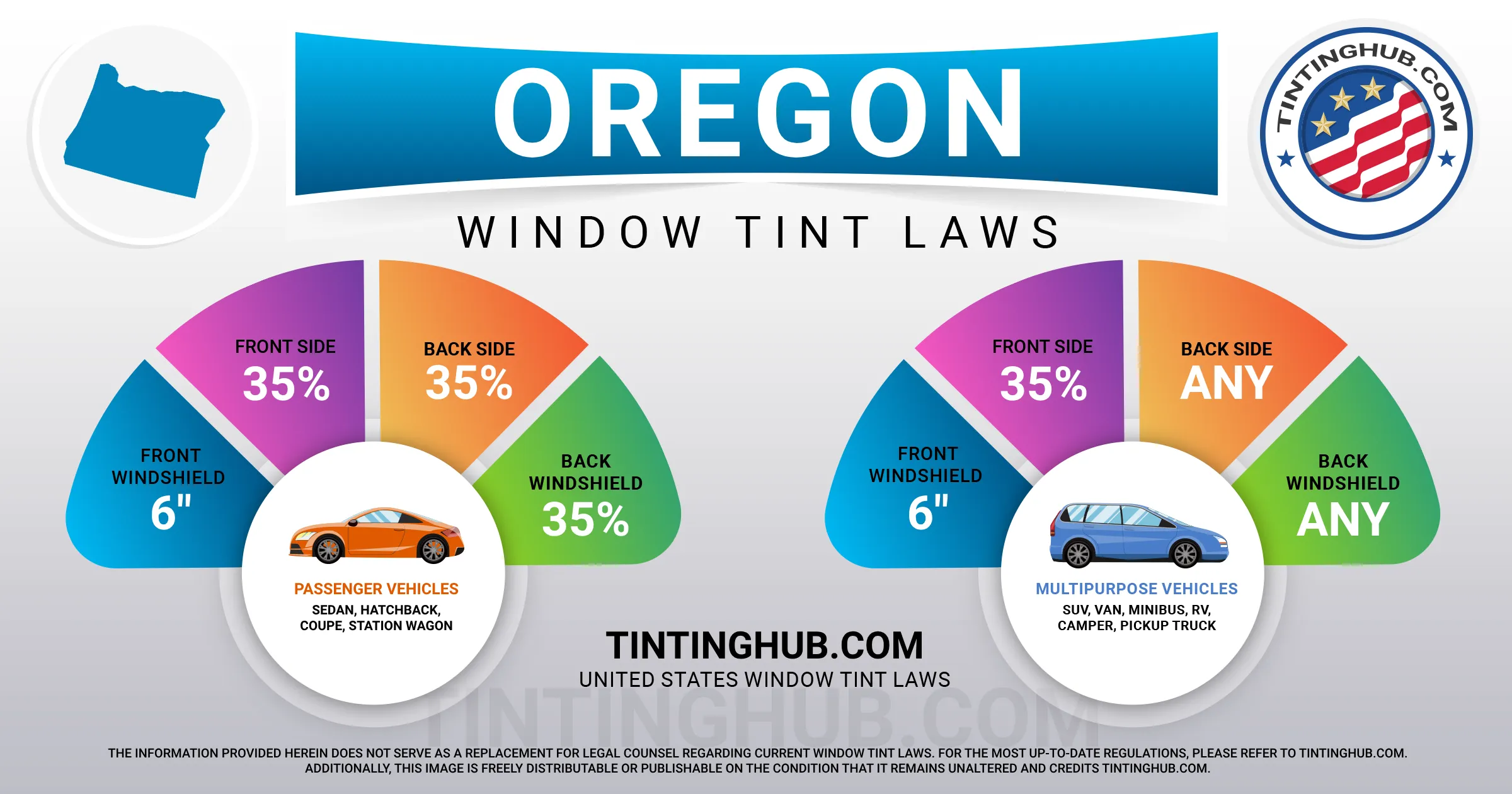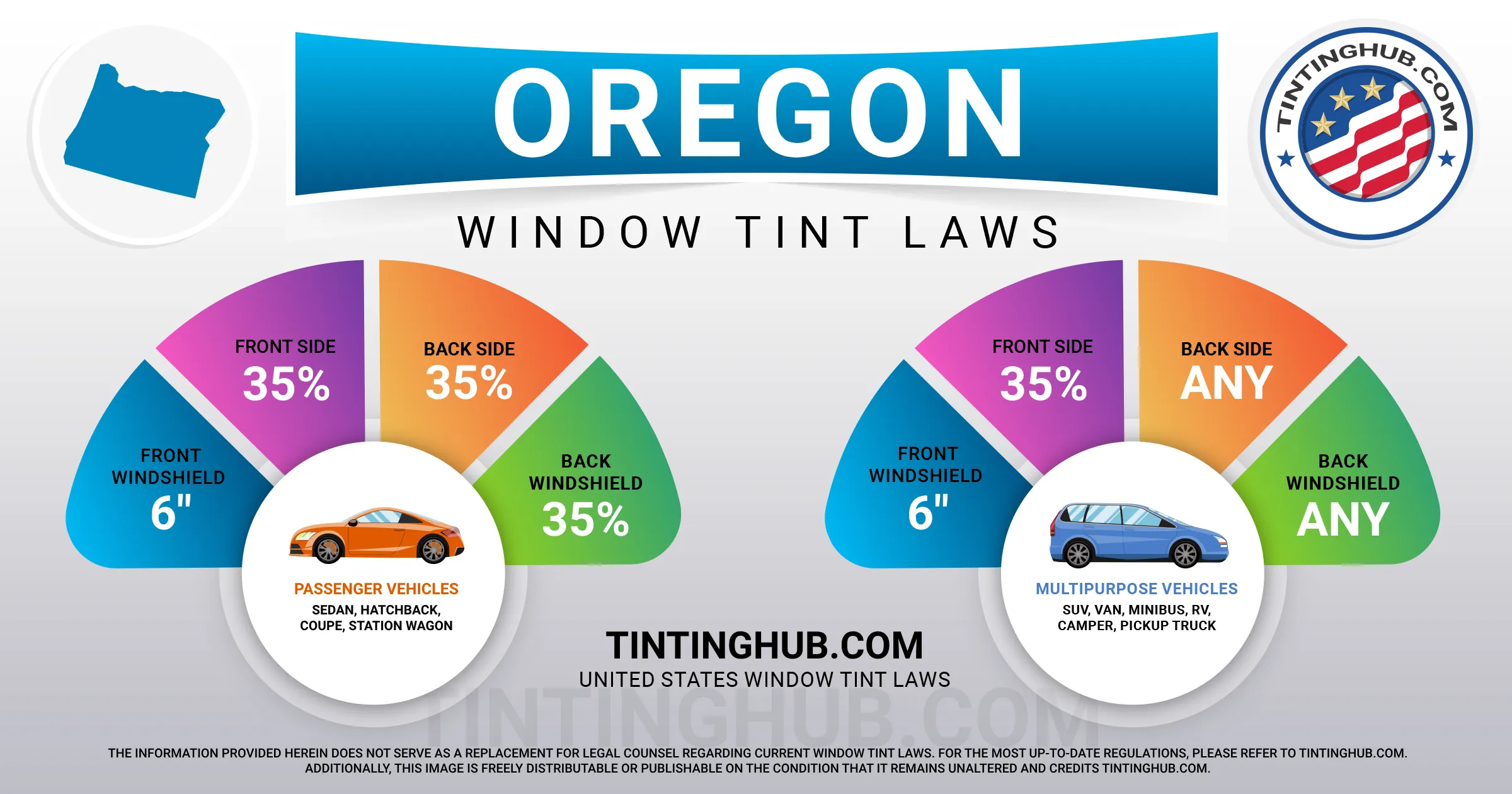Oregon Window Tint Laws (Last Update 2024)

In the evergreen state of Oregon, the regulations surrounding car window tinting have been in place since 2003. To ensure you’re well-informed and compliant, we’ve compiled an extensive guide on Oregon’s window tinting laws. From permissible tint darkness to reflection levels and additional regulations, this article has you covered.

Understanding Tint Darkness in Oregon
Oregon strictly regulates the amount of visible light that can pass through your car windows, referred to as VLT, or Visible Light Transmission. The allowed VLT percentages vary between sedan cars and SUVs/vans.
Tint Darkness for Sedans
- Windshield: Non-reflective tint is allowed on the top 6 inches of the windshield.
- Front Side Windows: These windows must allow more than 35% of light in.
- Back Side Windows: The back side windows must also allow more than 35% of light in.
- Rear Window: The rear window should permit more than 35% of light.
Tint Darkness for SUVs and Vans
- Windshield: Similar to sedans, non-reflective tint is allowed on the top 6 inches of the windshield.
- Front Side Windows: A minimum of 35% of light must pass through.
- Back Side Windows: There are no restrictions on darkness for these windows.
- Rear Window: Similar to back side windows, there are no specific darkness restrictions.
Examining Tint Reflection in Oregon
Tinting can also reduce glare and heat through the reflection of incoming light. Oregon law addresses this aspect as well.
Tint Reflection for Sedans
- Front Side Windows: These windows must not reflect more than 13% of light.
- Back Side Windows: The reflection from the back side windows should also not exceed 13%.
Tint Reflection for SUVs and Vans
- Front Side Windows: For SUVs and vans, the front side windows should not reflect more than 13% of light.
- Back Side Windows: Similarly, the reflection from the back side windows should not be more than 13%.
Other Oregon Window Tint Regulations
Beyond tint darkness and reflection, Oregon has several other crucial regulations regarding window tinting. These include:
1. Side Mirrors
If any window behind the driver is tinted, dual side mirrors are a requirement. This ensures the driver’s visibility and safety are not compromised.
2. Restricted Colors
Oregon law prohibits the use of specific tint colors, including red, gold, yellow, amber, or black. Ensure your tint adheres to these color restrictions.
3. Certificates
Tint installers in Oregon are obligated to provide a certificate stating the light transmittance and reflectance of the tint. This documentation is vital to prove compliance with the law.
4. Stickers
Unlike some states, Oregon does not mandate a sticker to identify legal tinting. However, it is advisable to keep the tint certificate in your vehicle for reference if needed.
5. Medical Exceptions
Oregon allows for medical exemptions for darker tint. If you have a valid medical reason for darker tint, make sure you have the necessary documentation.
6. Penalties
Violating Oregon’s window tint laws can result in a Class B traffic violation with a $360 fine. To avoid this, it’s essential to comply with the state’s regulations.
Local Variations
It’s important to note that interpretations of Oregon’s tinting laws and regulations may vary in different counties or places of residence. We recommend double-checking this information with your local DMV or law enforcement authorities to ensure accurate compliance.
Our information regarding window tint laws in Oregon was last updated in 2023. If you come across any discrepancies or outdated information, please don’t hesitate to contact us, and we will promptly address any issues.
For the most up-to-date and accurate information on window tinting laws, trust the industry leader – your go-to source for reliable and comprehensive window tinting regulations.